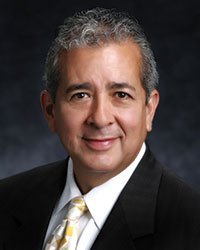
By Robert R. Puente, SAWS President and CEO
Summer blasted in much earlier than normal this year, as San Antonio recorded the hottest May, June and July on record. Making matters worse, the weather pattern La Niña has limited rainfall since fall 2020, bringing significant drought to the western United States. As of July 7, 84 percent of the region was in some form of drought.
But even in widespread drought, how is it that San Antonio is not facing a water crisis? Thanks to SAWS-initiated strategies implemented over the past 15 years, the city has avoided the shortage that others in the West are experiencing. Using a combination of water diversification, conservation incentives and sensible regulation, city leaders in partnership with San Antonio Water System have created a culture of water stewardship and conservation that is making the community water-secure while demonstrating what could be a model for other cities.
In the early 1990s, pumping from the Edwards Aquifer was a free-for-all. There were no limitations, as many assumed the massive aquifer could provide an endless supply of water. But as pumping increased, aquifer-dependent spring flows dwindled, threatening the blind salamander, an endangered species unique to the aquifer.
Lawsuits followed, and in 1993 U.S. District Judge Lucius Bunton announced the Texas Legislature had to enact a regulatory plan to limit withdrawals from the Edwards Aquifer or he would do so, effectively putting the federal government in charge of the city’s only source of drinking water.
To maintain regional control, as a state representative and later chair of the House Natural Resources Committee, I helped pave the way for creation of the Edwards Aquifer Authority to regulate pumping that affects the spring flows on which the blind salamander relies. This led to future legislation that established regional water planning and allowed for the establishment and enforcement of reasonable water conservation practices, as well as the prohibition of excessive or wasteful uses of water that are now the cornerstone of our water management plan as SAWS.
The creation of the Edwards Aquifer Authority, which allocated permits to protect the aquifer from overpumping, and the SAWS board’s direction to develop alternate water resources marked a turning point in how leaders handled water planning for a growing city.
In 2005 and again in 2014, on the recommendation from SAWS, the city of San Antonio passed significant conservation ordinances that reduced the per-person, per-day water use from a high of 225 gallons in the mid-1980s to 111 gallons in 2021.
Year-round watering rules, plus once-a-week watering days (when warranted) and additional conservation rules during drought have propelled our community ahead of the rest of the nation in managing and extending our water supplies in a sustainable, affordable way.
Now, with 15 water projects coming from nine different sources, San Antonio has averted the water crisis that many cities across the country are dealing with. Today, the Edwards Aquifer is about 50 percent of our water supply.
Should aquifer levels continue to fall, we can rely on our other sources, including the Regional Carrizo Project (2013), desalination plant (2017) and Vista Ridge pipeline (2020), to ensure we have ample supplies and stave off harsher watering rules. Not to mention, we have a water savings account called Aquifer Storage and Recovery in which we bank excess water during rainy times in an underground aquifer and withdraw it during dry periods. There is enough stored water to last San Antonio more than nine months.
With the effects of climate change revealed in weather patterns that cause extreme flooding in some regions and unprecedented drought in others, our preparation has proven essential. Back in the 1980s, no one could have foreseen that San Antonio would be at the center of one of the fastest-growing regions in the country. But we are well-prepared, thanks to a philosophy of water management and conservation that was fine-tuned over the past 15 years.
What seemed to be a drastic move to regulate the Edwards Aquifer turned out to be a fortuitous moment in our city’s history, prepping us for a more thoughtful, sustainable approach to water management.
Our ongoing commitment to conservation and water supply diversification will serve our community well during this drought and for generations to come.